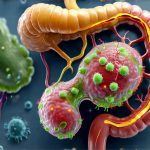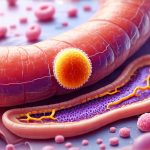Our digestive system is often an overlooked hero, silently working away to break down food and absorb nutrients. But it’s far more than just a processing plant; it’s a complex ecosystem teeming with trillions of microorganisms – bacteria, fungi, viruses, and others collectively known as the gut microbiota. This microbial community profoundly impacts our overall health, influencing everything from digestion and immunity to mental wellbeing. And one of the most accessible windows into the state of this intricate world within is… our poop. Yes, really. What we eliminate can tell us a surprising amount about the composition and activity of our gut bacteria, offering clues about our digestive health and potential imbalances.
For centuries, healthcare practitioners have used stool examination as a diagnostic tool, but traditionally focused on identifying parasites or pathogens. Now, with advancements in scientific understanding and technologies like microbiome sequencing, we’re beginning to decode the messages hidden within fecal matter – not just what’s wrong but also what’s right, and how to nurture a healthier gut environment. Paying attention to your poop isn’t about becoming obsessed with every detail; it’s about recognizing patterns and understanding when something might be off, prompting further investigation if needed. It’s an act of self-awareness that can empower you to take proactive steps toward better health. You can learn more about gut bacteria and how doctors evaluate them.
The Bristol Stool Scale & Bacterial Diversity
The most widely recognized tool for visually assessing stool is the Bristol Stool Scale, developed in 1992 by Heaton and Jones. This scale categorizes fecal matter into seven types, ranging from separate hard balls (Type 1) to watery stools (Type 7). Types 1 & 2 suggest constipation and potentially reduced bacterial diversity – a slower transit time means less opportunity for beneficial bacteria to flourish. Conversely, Types 6 & 7 often indicate rapid intestinal movement which can mean undigested food is passing through too quickly, again impacting the ability of gut microbes to properly interact with nutrients. Ideally, you’re aiming for Type 3 or 4 – soft but formed, like a sausage or snake, and easily passed.
But visual appearance is only part of the story. The composition of your stool, particularly its microbial content, is where the real insights lie. A diverse gut microbiome—meaning a wide variety of different bacterial species—is generally considered a sign of good health. Higher diversity correlates with improved digestion, stronger immunity, and even better mental health. Stool tests can now identify the specific types and abundance of bacteria present in your gut. These tests are not always necessary but may be valuable if you suspect significant imbalances or have chronic digestive issues. It’s important to remember that “normal” microbiome composition varies significantly between individuals based on factors like diet, genetics, and lifestyle. Understanding your poop can be an excellent first step.
The relationship between stool consistency and bacterial diversity isn’t simple. For example, a sudden change in stool type doesn’t automatically equate to an imbalance. Stress, travel, or dietary shifts can all cause temporary fluctuations. However, persistent changes in consistency coupled with other symptoms should warrant attention. A healthy gut microbiome contributes to the formation of short-chain fatty acids (SCFAs) during fiber fermentation. SCFAs have numerous benefits and their presence is indirectly indicated by well-formed stool.
The Role of Fiber & Prebiotics
Fiber is a crucial component for a thriving gut microbiome. It’s the primary food source for beneficial bacteria, allowing them to ferment into those vital SCFAs like butyrate, propionate, and acetate. These SCFAs not only nourish colon cells but also have anti-inflammatory properties and influence immune function. A diet lacking in fiber will lead to reduced bacterial diversity and can contribute to constipation or diarrhea. Aiming for 25-35 grams of fiber per day through a variety of plant foods – fruits, vegetables, whole grains, legumes – is recommended.
Prebiotics, found in foods like onions, garlic, leeks, asparagus, bananas, and oats, are essentially food for the probiotics (beneficial bacteria). They selectively promote the growth of these beneficial microbes, increasing their numbers and enhancing their activity. Combining prebiotic-rich foods with probiotic-rich fermented foods – yogurt, kefir, sauerkraut, kimchi – can create a synergistic effect, fostering a robust and balanced gut ecosystem. It’s important to introduce fiber and prebiotics gradually to avoid bloating or gas as your gut bacteria adjust. Bloating can often indicate this adjustment is happening.
A shift towards a more plant-based diet is consistently linked to increased microbial diversity. Animal products, while not inherently bad, often contribute less dietary fiber than plant sources. Moreover, the way food is processed also plays a role. Highly processed foods tend to lack fiber and can contain additives that disrupt the gut microbiome. Focusing on whole, unprocessed foods is therefore key for nurturing a healthy gut.
Identifying Potential Imbalances Through Stool Testing
While visual inspection and dietary adjustments are valuable starting points, stool testing offers a more detailed assessment of your gut microbial composition. These tests typically analyze DNA extracted from stool samples to identify the different bacterial species present, their relative abundance, and potential imbalances. Several types of stool tests are available, ranging in price and complexity:
- Comprehensive Stool Analysis (CSA): This is the most thorough type of test, providing detailed information about bacteria, fungi, parasites, markers of inflammation, digestive enzymes, and SCFA production.
- Microbiome Sequencing: Focuses specifically on identifying and quantifying bacterial species present in the gut.
- Basic Stool Tests: Primarily used to detect pathogens or parasites, offering limited insight into microbiome composition.
It’s crucial to interpret stool test results with a healthcare professional familiar with gut health. A high abundance of certain bacteria isn’t necessarily “bad” – context matters. For example, some bacteria are naturally more prevalent in certain diets. The goal is not to eliminate specific bacteria but rather to achieve a balanced ecosystem. Imbalances can sometimes indicate conditions like Small Intestinal Bacterial Overgrowth (SIBO), where excessive bacteria accumulate in the small intestine, leading to digestive symptoms.
Addressing Gut Dysbiosis: A Holistic Approach
If stool testing reveals significant imbalances (dysbiosis), several strategies can help restore gut health. Dietary changes are often the first line of defense – increasing fiber intake, incorporating prebiotics, and reducing processed foods. Probiotic supplementation, while potentially helpful for some, isn’t a one-size-fits-all solution. Different probiotic strains have different effects, so choosing the right strain based on your specific needs is essential.
Beyond diet and probiotics, factors like stress management and adequate sleep also play a crucial role. Chronic stress can negatively impact gut microbial composition, while insufficient sleep disrupts circadian rhythms that influence digestive function. Regular exercise promotes gut motility and diversity. Belching frequency can sometimes be linked to these imbalances. Antibiotic use, while sometimes necessary, can significantly disrupt the microbiome, so it’s important to use them judiciously and consider probiotic supplementation afterward (under medical guidance). Understanding throat clearing as a symptom is also helpful. Finally, you can learn about what your doctor checks during a physical gut exam.
Ultimately, restoring gut health is a holistic process that requires addressing multiple factors. It’s not about quick fixes or following trendy diets; it’s about cultivating sustainable lifestyle habits that support a thriving microbial ecosystem. Your poop provides valuable clues along the way – a reminder to listen to your body and prioritize digestive wellbeing.


















